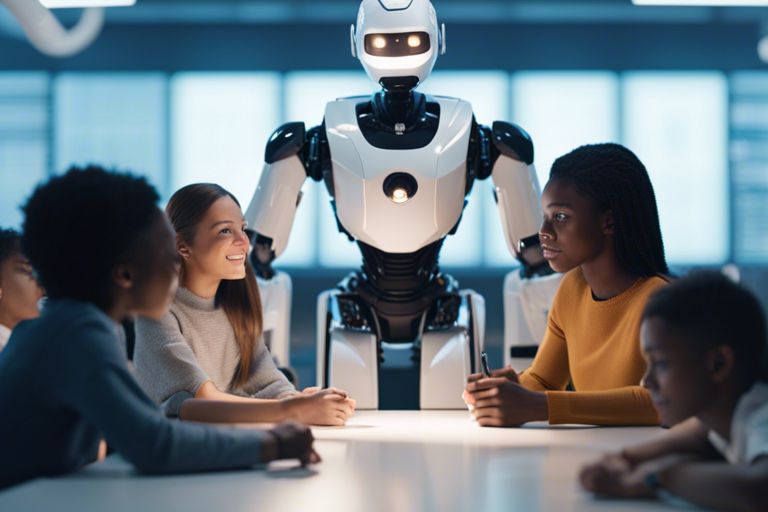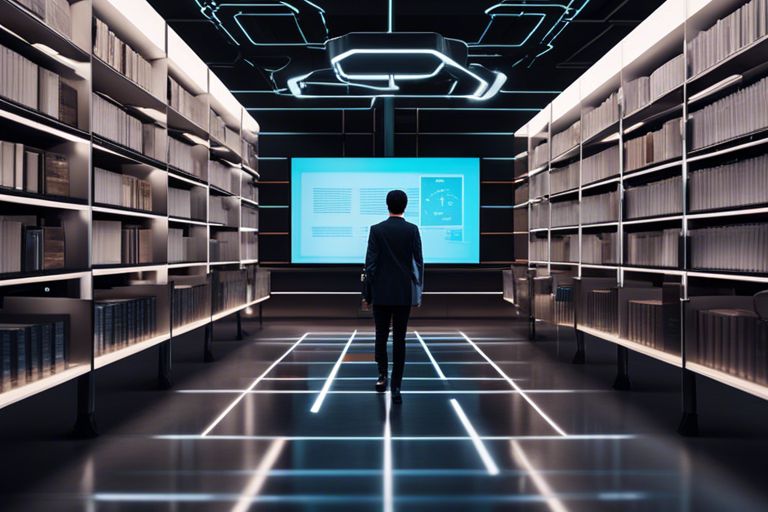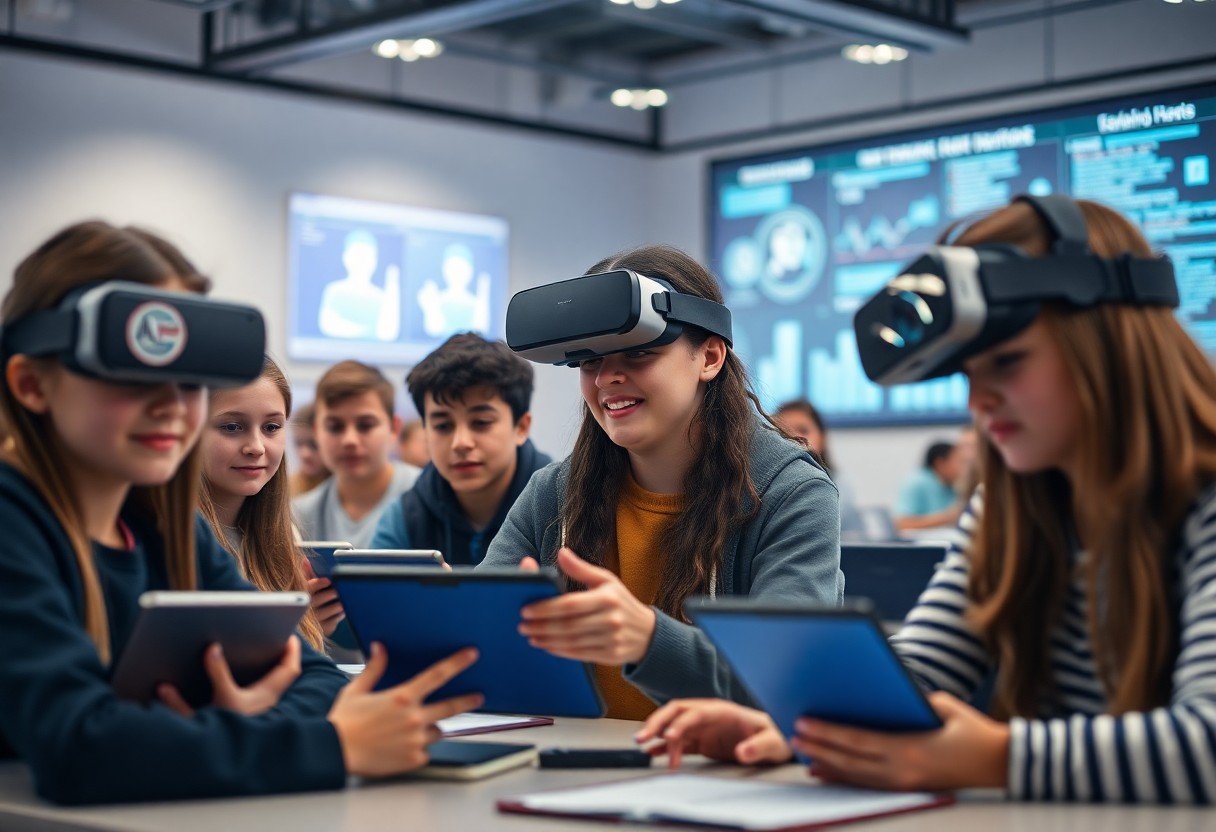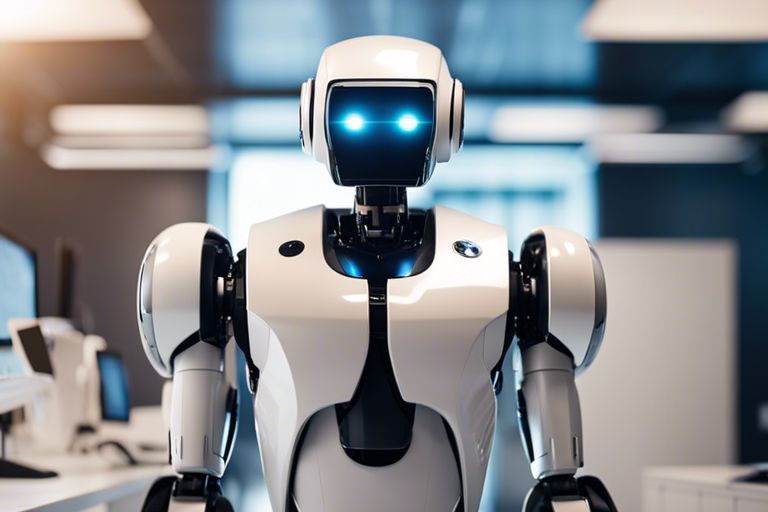Most educators today are faced with the incredible opportunity to leverage the power of artificial intelligence to revolutionize their teaching methods and enhance student learning. From personalized learning experiences to real-time feedback, AI technology offers unprecedented potential to transform the traditional classroom setting. By embracing AI tools and platforms, educators can empower themselves to better understand student needs, tailor instruction, and ultimately enhance academic outcomes.
The Current State of Education
While the education sector has made significant advancements in recent years, there are still various challenges that educators face in leveraging technology effectively. One of the primary obstacles is the digital divide, where not all students have equal access to technology and the internet. This discrepancy can hinder the implementation of AI tools in the classroom, as some students may be at a disadvantage compared to their peers.
The Challenges Faced by Educators
One challenge is the fear of job displacement among educators. With the integration of AI in education, there is concern that teachers may be replaced by automated systems. Additionally, there is a lack of training and resources available to support educators in effectively utilizing AI tools in their teaching practices.
The Opportunities for Innovation
An exciting opportunity for innovation lies in the personalized learning experiences that AI can offer. By analyzing student data and behavior, AI systems can provide customized learning paths tailored to individual needs. This not only enhances student engagement but also allows educators to focus on providing targeted support where it is most needed.
Plus, AI can assist educators in grading and assessment tasks, freeing up valuable time that can be redirected towards more personalized interactions with students. This shift can lead to more meaningful learning experiences and foster deeper connections between teachers and learners.
What is Artificial Intelligence?
Defining AI and Its Capabilities
You may have heard the term “Artificial Intelligence” thrown around a lot, but what does it really mean? In essence, Artificial Intelligence refers to the development of computer systems that can perform tasks that typically require human intelligence, such as visual perception, speech recognition, decision-making, and language translation. These systems are designed to learn from data, adapt to new inputs, and perform tasks autonomously.
Debunking Common Misconceptions
Any discussions surrounding Artificial Intelligence are often accompanied by misconceptions and myths. One common misconception is that AI will replace human educators in the classroom. While AI can assist teachers by automating routine tasks and providing personalized learning experiences for students, it cannot replace the human touch, empathy, and critical thinking skills that educators bring to the table.
Plus, another misconception is that AI is only accessible to tech-savvy individuals. In reality, there are many user-friendly AI tools and platforms available that educators can easily integrate into their teaching practices without needing advanced technical skills. By debunking these common misconceptions, educators can better understand how AI can enhance rather than replace their roles in the classroom.

The Potential of AI in Education
Personalized Learning Experiences
The world of education is rapidly evolving with the integration of artificial intelligence (AI) into classrooms. One of the most significant advantages of AI in education is the ability to provide personalized learning experiences for students. By analyzing data on individual learning styles, preferences, and pace, AI can tailor educational content to meet the specific needs of each student. This personalized approach helps to maximize student engagement and achievement.
Enhanced Student Engagement
An additional benefit of AI in education is the enhanced student engagement it fosters. Through interactive learning platforms, virtual reality simulations, and chatbots that provide instant feedback and support, AI can capture and maintain students’ interest in learning. By making the educational experience more interactive and engaging, AI encourages students to explore and understand concepts in ways that traditional methods may not.
AI-Powered Adaptive Assessments
Many educational institutions are turning to AI-powered adaptive assessments to enhance the testing and evaluation process in classrooms. This technology revolutionizes traditional testing methods by providing personalized assessments based on each student’s learning pace and capabilities. Adaptive assessments use algorithms to analyze a student’s responses in real-time and adjust the difficulty level of questions accordingly, ensuring a more accurate representation of a student’s knowledge and skills.
Revolutionizing Testing and Evaluation
Adaptive assessments not only save educators time on grading but also offer a more comprehensive understanding of each student’s strengths and weaknesses. By providing tailored assessments, educators can identify areas where students may need additional support and adjust their teaching strategies accordingly. This individualized approach to testing helps students feel more engaged and motivated to learn, leading to improved academic performance.
Providing Real-Time Feedback
On top of personalized assessments, AI-powered adaptive tools also provide real-time feedback to students. This immediate response mechanism allows students to understand their mistakes as they make them, enabling them to correct their errors and learn from them instantly. Plus, educators can track student progress more efficiently and intervene when necessary to provide additional guidance and support.
Based on Malcolm Gladwell’s engaging and thought-provoking writing style, the benefits of AI-powered adaptive assessments in the classroom are truly transformative. By leveraging this technology, educators can enhance the learning experience for students, improve academic outcomes, and personalize education to meet the needs of every learner.
Intelligent Tutoring Systems
For
One-on-One Support for Students
One-on-one support for students is a crucial aspect of education, and intelligent tutoring systems (ITS) have revolutionized the way educators can provide personalized assistance to learners. These systems use artificial intelligence algorithms to adapt to students’ individual learning styles and pace. By offering immediate feedback and tailored guidance, ITS can enhance the learning experience and improve student outcomes.
For
Humanizing the Learning Process
Intelligent tutoring systems can humanize the learning process by simulating a personalized interaction between the student and the system. Through natural language processing and machine learning capabilities, ITS can engage students in a more conversational and empathetic manner. This helps create a supportive learning environment that encourages students to actively participate and stay motivated.
Systems: These ITS can analyze vast amounts of data on student performance and behavior to identify patterns and provide insights to educators. By leveraging predictive analytics, educators can anticipate students’ needs and intervene proactively to prevent learning gaps. This proactive approach can lead to improved learning outcomes and academic success for all students.
Natural Language Processing in Education
Your students’ learning experience can be greatly enhanced through the application of Natural Language Processing (NLP) in the classroom. This branch of artificial intelligence focuses on the interaction between computers and human language, offering a myriad of possibilities for educators to revolutionize the way they teach and students learn.
Improving Reading Comprehension
Improving reading comprehension is a fundamental skill that forms the basis of academic success. By utilizing NLP tools, educators can analyze text complexity, provide personalized reading recommendations, and even generate comprehension questions tailored to each student’s level. This individualized approach can help students develop a deeper understanding of the material and enhance their critical thinking skills.
Enhancing Writing Skills
Processing large amounts of writing assignments can be a daunting task for educators. However, with the help of NLP, teachers can automate the process of grading essays, providing instant feedback on grammar, style, and structure. This not only saves time for educators but also allows students to receive immediate guidance on how to improve their writing skills, ultimately fostering better communication abilities.
With Natural Language Processing, educators can harness the power of AI to create engaging and interactive learning experiences that cater to the individual needs of each student. By leveraging this technology, teachers can provide personalized support, improve learning outcomes, and transform the educational landscape for the better.
AI-Driven Content Creation
To
Generating Customized Educational Materials
After harnessing the power of Artificial Intelligence in the classroom, educators can benefit from AI-driven content creation tools that generate customized educational materials. These tools utilize algorithms to analyze students’ learning patterns, strengths, and weaknesses to create personalized quizzes, worksheets, and lesson plans. By tailoring educational materials to individual student needs, AI helps educators enhance student engagement and comprehension in the classroom.
To
Reducing Teacher Workload
After implementing AI-driven content creation tools, one major advantage for educators is the significant reduction in teacher workload. AI can assist in automating administrative tasks like grading assessments, providing feedback on student work, and even creating lesson plans. By offloading these time-consuming tasks to AI, teachers can focus more on providing quality instruction and individualized support to their students. The use of AI in content creation not only saves time but also allows educators to allocate their energy effectively towards student learning outcomes.
The benefits of reducing teacher workload through AI-driven content creation are manifold. By automating routine tasks, educators can allocate more time to mentoring students, fostering critical thinking skills, and nurturing creativity. This shift in focus can lead to a more enriching educational experience for students, empowering them to become independent learners. Through AI-driven content creation, teachers can create a more interactive and engaging learning environment, cultivating a passion for learning among students.
Another advantage of AI-driven content creation is the ability to provide real-time feedback to students. By analyzing student performance data, AI can identify areas where students may be struggling and offer targeted support. This personalized approach to learning not only improves student outcomes but also empowers educators to make data-driven instructional decisions.
Virtual Learning Environments
Keep pace with the digital age by leveraging Virtual Learning Environments (VLEs) in your classroom. These platforms offer a dynamic and interactive way to engage students in their learning process. By incorporating Artificial Intelligence (AI) technologies, educators can create personalized learning experiences tailored to each student’s needs.
Immersive and Interactive Learning Spaces
Immersive learning spaces powered by AI can revolutionize traditional teaching methods. Students can look into virtual worlds, conduct experiments, and engage in simulations that bring learning to life. By providing a hands-on and engaging environment, educators can enhance student comprehension and retention of complex concepts.
Expanding Access to Education
An increasing number of students are turning to online education for its flexibility and accessibility. AI-driven virtual classrooms can bridge the gap for students in remote areas or with limited resources. By breaking down geographical barriers and offering flexible learning schedules, these virtual environments empower students to access quality education from anywhere in the world.
To capitalize on the benefits of expanding access to education through virtual learning environments, educators must ensure that equity and inclusivity remain at the forefront. By leveraging AI technologies responsibly, schools can offer tailored support to students with diverse learning needs, ultimately creating a more inclusive learning environment for all.
Teacher Training and Development
Preparing Educators for an AI-Infused Classroom
All educators must undergo comprehensive training to effectively harness the power of artificial intelligence in the classroom. This training should cover not only the technical aspects of AI but also its ethical implications and best practices for integration. Understanding how AI can enhance the learning experience is crucial for educators to adapt to the changing educational landscape. Professional development programs and workshops focused on AI can help teachers feel more confident in utilizing these technologies to their full potential.
Building Confidence in AI Integration
Any educator looking to incorporate AI into their teaching practices must first cultivate confidence in utilizing these technologies. Having hands-on experience with AI tools and platforms can significantly boost teachers’ confidence levels. Creating a supportive environment where educators can experiment with AI applications and receive feedback can also help them overcome any initial hesitations about integrating these technologies into their teaching.
Building confidence in AI integration is vital for educators to fully leverage the benefits of artificial intelligence in the classroom.
Addressing Concerns and Ethical Considerations
Once again, as we examine into artificial intelligence (AI) in education, it’s crucial to address the concerns and ethical considerations that come with its implementation in the classroom.
Ensuring AI Bias-Free Decision-Making
Concerns: One of the primary worries surrounding AI in education is the potential for bias in decision-making processes. AI systems are only as unbiased as the data they are trained on, and if this data reflects societal prejudices or inequalities, it can perpetuate bias in educational outcomes. It is imperative for educators to work closely with developers to ensure that AI algorithms are constantly monitored and adjusted to minimize bias.
Protecting Student Data and Privacy
DecisionMaking: The protection of student data and privacy is a paramount ethical consideration when implementing AI in the classroom. Educators must ensure that AI systems are designed with robust data protection measures in place. This includes obtaining explicit consent from students or their guardians, securely storing data, and adhering to strict privacy regulations such as the Family Educational Rights and Privacy Act (FERPA).
Implementing AI in the Classroom
Strategies for Successful Integration
Now, educators must consider various strategies for successfully integrating artificial intelligence in the classroom. Any implementation should start with clearly defined goals and learning objectives. Teachers should identify areas where AI can enhance student learning and engagement, whether it’s personalized learning, grading automation, or data analysis to improve instruction. Collaboration between teachers, administrators, and AI developers is crucial to ensure that the technology aligns with educational outcomes and is seamlessly integrated into existing curriculum and teaching practices.
Overcoming Technical and Logistical Hurdles
Now, educators may face Hurdles when incorporating AI into the classroom due to technical and logistical challenges. With proper training and professional development, teachers can build the necessary skills to effectively use AI tools. Schools must also address infrastructure needs, such as reliable internet access and compatibility with existing devices. Additionally, ensuring data privacy and security is paramount when utilizing AI technology in educational settings.
Measuring the Impact of AI in Education
Not only can artificial intelligence revolutionize the way students learn, but it can also provide invaluable insights into the effectiveness of teaching methods and learning outcomes in the classroom.
Evaluating Effectiveness and Efficiency
One way educators can measure the impact of AI in education is by evaluating its effectiveness and efficiency. AI systems can track student progress, identify areas where individuals may be struggling, and even provide personalized learning experiences to optimize educational outcomes. By analyzing data collected by AI algorithms, teachers can gain a deeper understanding of student needs and tailor their instruction accordingly, ultimately leading to improved learning outcomes.
Identifying Areas for Improvement
Effectiveness in education is crucial for student success. By leveraging AI technology, educators can identify specific areas where improvement is needed, whether it be in teaching methodologies, curriculum design, or student engagement. AI can pinpoint patterns in student performance and behavior that may not be immediately apparent to teachers, allowing for targeted interventions and support to enhance the overall learning experience.
Impact: Measuring the impact of AI in education is vital for shaping the future of learning. By evaluating effectiveness and efficiency, educators can optimize teaching methods and student outcomes. Identifying areas for improvement through AI technology enables targeted support for student success, ultimately transforming the educational landscape.
The Future of AI in Education
To harness the power of artificial intelligence in the classroom, educators must stay attuned to the rapidly evolving landscape of AI in education. By understanding the future trends and potential developments in AI, teachers can better prepare themselves and their students for the educational opportunities of tomorrow.
Emerging Trends and Developments
An imperative aspect of utilizing AI in education is being aware of emerging trends and developments. Advancements in natural language processing have the potential to revolutionize how students interact with AI-driven tools, making learning more personalized and engaging. Machine learning algorithms are becoming increasingly sophisticated, enabling educators to analyze vast amounts of data to tailor instruction to individual student needs. Virtual reality and augmented reality technologies are also on the rise, offering immersive learning experiences that were once unimaginable.
Anticipating the Next Generation of AI-Powered Tools
Next, educators must anticipate the next generation of AI-powered tools that will shape the future of education. Tools such as intelligent tutoring systems, personalized learning platforms, and AI-generated content will become more prevalent in classrooms, providing teachers with valuable insights into student progress and enabling personalized learning at scale. By embracing these innovative tools, educators can enhance their teaching practices and empower students to reach their full potential in an AI-driven world.
Conclusion
From above, it is evident that educators have a tremendous opportunity to harness the power of artificial intelligence in the classroom to revolutionize the way students learn. By utilizing AI tools for personalized learning, adaptive assessments, and data-driven insights, teachers can enhance their teaching methods and provide more tailored support to each student. Embracing AI in education can lead to increased student engagement, improved academic outcomes, and a more efficient and effective learning environment.
As we continue to explore the possibilities of AI in education, it is important for educators to stay informed, open-minded, and proactive in integrating these technologies into their teaching practices. By leveraging the power of artificial intelligence, educators can pave the way for a more innovative and adaptive approach to education that meets the diverse needs of students in the 21st century.
FAQ
Q: Why should educators consider harnessing the power of artificial intelligence in the classroom?
A: Educators should consider harnessing the power of artificial intelligence in the classroom because it can personalize learning experiences, provide real-time feedback, and automate administrative tasks, ultimately enhancing student engagement and academic performance.
Q: How can artificial intelligence personalize learning experiences for students?
A: Artificial intelligence can personalize learning experiences by analyzing data on individual student performance and preferences to create customized learning paths, activities, and resources tailored to their specific needs and learning styles.
Q: What role does real-time feedback play in leveraging artificial intelligence in the classroom?
A: Real-time feedback provided by artificial intelligence tools allows educators to monitor student progress instantly, identify areas of difficulty, and offer timely interventions to support student learning and mastery of concepts.
Q: In what ways can artificial intelligence help educators automate administrative tasks?
A: Artificial intelligence can help educators automate administrative tasks such as grading assignments, scheduling activities, managing student records, and generating reports, freeing up more time for teaching, planning, and student support.
Q: How can educators ensure the ethical use of artificial intelligence in the classroom?
A: Educators can ensure the ethical use of artificial intelligence in the classroom by being transparent about how AI technologies are being used, protecting student data privacy, promoting digital literacy, and addressing biases that may exist in AI algorithms.
Q: What are some challenges educators may face when integrating artificial intelligence into their teaching practice?
A: Some challenges educators may face when integrating artificial intelligence into their teaching practice include resistance to change, lack of training and resources, concerns about job security, and the need to balance technology use with human interaction and creativity in the classroom.
Q: How can educators stay informed about the latest developments and best practices in using artificial intelligence in education?
A: Educators can stay informed about the latest developments and best practices in using artificial intelligence in education by participating in professional development opportunities, attending conferences and workshops, reading research articles and publications, and engaging with other educators and experts in the field.




